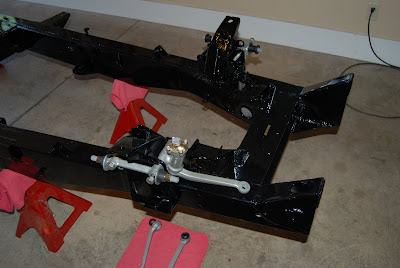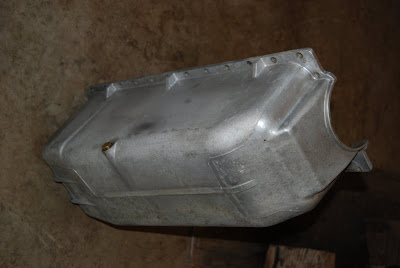 . Unfortunately it stopped half way through the left hand rear leaf spring. The right side however is mounted and the bolts are all snugged up. They don't get tightened up for good until the full weight of the car is on them. It is so wonderful to see something reattached to the frame. We are starting to go in the right direction. Tomorrow the rear axle gets fluids and grease. I don't remember if it was said earlier, but all bearings and seals have been replaced. Lash and end float are good. And it is clean and shiny.
. Unfortunately it stopped half way through the left hand rear leaf spring. The right side however is mounted and the bolts are all snugged up. They don't get tightened up for good until the full weight of the car is on them. It is so wonderful to see something reattached to the frame. We are starting to go in the right direction. Tomorrow the rear axle gets fluids and grease. I don't remember if it was said earlier, but all bearings and seals have been replaced. Lash and end float are good. And it is clean and shiny.On with other news, the block went to the machine shop today to be hot tanked, then magna-fluxed and then pressurized to check porosity. The engine was setting for so long with water in it that before a bundle is spent on it, I want to make certain that there isn't something hiding that will cause headaches
 later. Also the front brake drums were getting turned, the right stub axle was getting pushed out (that was the one that was burnt), and the idler arm of the steering box was getting pulled off so disassembly of could start. The machinist confirmed my fears that the crankshaft was not restorable. I will need to find the lower end from a later car. I'm told that the rods from XJ-6's will fit. I don't know if the crank will as well.
later. Also the front brake drums were getting turned, the right stub axle was getting pushed out (that was the one that was burnt), and the idler arm of the steering box was getting pulled off so disassembly of could start. The machinist confirmed my fears that the crankshaft was not restorable. I will need to find the lower end from a later car. I'm told that the rods from XJ-6's will fit. I don't know if the crank will as well.




































